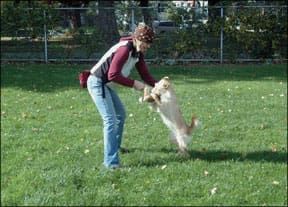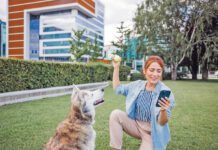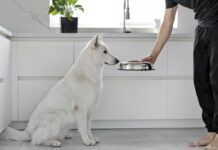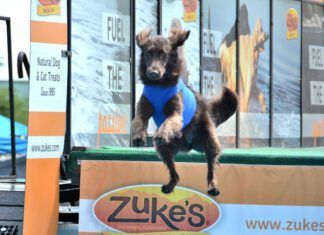Food rewards are powerful tools in the hands of a good positive trainer. Food is considered a primary reinforcer because it has innate value; a dog doesn’t have to learn to like food through association. Using a clicking sound made by a clicker (or other reward marker, such as the word “Yes!”), followed by a high-value food treat is a quick and easy way to send your dog a powerful positive message about which behavior he could repeat to get reinforced again.
Food is also commonly used in classical conditioning and counter-conditioning, to create and build a dogs positive association with a specific stimulus.
But what do you do when your dog can’t or won’t take a treat? It depends on the reason he has to decline the food offering. Try these tactics:
1.) If he’s too distracted: Try a higher-value treat. High-value treats for dogs tend to be meaty, smelly (like sardines or smelly cheese), or fatty treats, but for some dogs it might be slices of banana or apple, baby carrots, cat kibble, or buttery bits of toast.
Experiment with a wide variety of foods to find out what trips your dog’s treat trigger. If higher-value treats don’t work, remove your dog to a less distracting environment, gradually increasing distractions as he’s ready to handle them.
2.) If he’s too full: Schedule your training sessions before meals when he’s hungry, rather than after. If he was eating treats but stopped, try a different high-value treat. Eventually even the best treat can get boring.
Also, cultivate a backup list of secondary reinforcers for use when he’s full. These may include playing a game with you (chasing a ball, tugging on a rope toy, chasing after you), being petted, or hearing cheerful praise. Be sure they’re really reinforcing to him! Does he seek them out? Then they are reinforcing. If he turns away or declines them, they are not.
3.) If he’s too stressed: Reduce your dog’s stress level. If you’re doing counter-conditioning, reduce the intensity of the aversive stimulus to a level where he’ll notice the stressor but still take treats. Increase the distance between your dog and the stressor, decrease the movement of the stressor, turn down the volume, etc. If you’re out and about, for example, on the first night of a training class just hang out in a corner with him until he habituates to (gets used to) the new environment and starts taking treats. Use backup reinforcers to improve your dog’s emotional state: a game of tug may cheer him up enough to eat. If he won’t eat from your hand, he may take treats dropped on the floor.
4.) If he’s not feeling well: If your dog is too sick to eat treats, or in too much pain, you shouldn’t be training. You can improve his associations and relieve his stress with acupressure and calming massage. There’s a calming acupressure point in a dog’s ear: gently rub his ear flap, near but not at the very end, between your thumb and fingers in a circular motion. If he can’t eat due to pending surgery, or to avoid carsickness but is otherwise fine, use alternative reinforcers.
5.) If you’ve run out: When you find yourself digging for treat crumbs in the corners of your pockets, you’ll be glad you have that list of alternative reinforcers! Also, don’t be afraid to delve into your own lunch box or refrigerator for treat alternatives. As long as you avoid the obvious no-no’s like chocolate, cooked chicken bones, grapes, raisins, and onions, most of what we call “human food” is fair game for dog treats.






